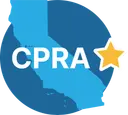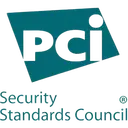Compliance monitoring is a continuous process that ensures organizations adhere to internal policies, procedures, and regulatory requirements. It typically involves dedicated resources, including teams and technology.
This blog post will guide you through the essentials of compliance monitoring, its importance for businesses, and how to develop an effective plan to tackle compliance challenges.
Key takeaways
- Compliance monitoring is a process of verifying adherence to internal regulations and external requirements through dedicated teams and technology
- It helps organizations mitigate legal and financial risks, safeguard assets and reputation, demonstrate accountability, optimize efficiency, and gain a competitive edge
- Technology plays an essential role in compliance monitoring by providing automation, real-time data, and reporting capabilities for successful compliance programs
High level: Understanding compliance monitoring
Compliance monitoring is a process that continuously verifies if organizations are adhering to both internal regulations and procedures as well as external requirements. It helps businesses navigate the complex world of regulations and avoid costly penalties.
Staying on top of regulatory changes and implementing effective compliance monitoring systems enables businesses to comply with regulations, safeguard sensitive data, and reduce legal and financial risks.
Technology also plays a pivotal role in this process, offering automation capabilities, real-time data, and generating reports that aid in decision-making.
Key components of a good compliance monitoring system
An effective compliance monitoring system encompasses risk assessment and risk evaluation, which requires several key ingredients. These comprise of:
- Policy reviews
- External audits
- Internal monitoring
- Compliance management software
All of these components are necessary for successful monitoring. Risk assessment is also a key component of this process, helping organizations identify, prioritize, and control risks associated with non-compliance. Regular review and updates of policies and procedures enable businesses to stay aligned with new laws, regulations, and industry best practices.
Employee training is another critical element of a successful compliance monitoring program. Proper training helps organizations achieve regulatory compliance by:
- Reducing the risk of violations
- Safeguarding them from legal liabilities
- Boosting productivity
- Ensuring that staff members are aware of their duties and obligations in upholding compliance
The role of technology in compliance monitoring
Technology is instrumental in compliance monitoring, enabling:
- Automation of processes
- Provision of real-time data
- Generation of reports for decision-making
Automation can enhance compliance monitoring by generating audit-ready reporting and intuitive dashboards that provide a comprehensive overview for all stakeholders and can be easily accessed for a surveillance audit.
With the use of managed SIEM (Security Information and Event Management) services, businesses can benefit from a cost-effective solution that allows their internal IT team to focus on more strategic initiatives while having access to a team of cybersecurity experts who are trained to monitor, analyze, and respond to potential security incidents.
SIEM software offers companies a proficient method to monitor their IT infrastructure. This can alert companies of any potential security breaches, allowing them to manage security-related incidents effectively.
Investment in technology for compliance monitoring enables businesses to make their processes more efficient, enhance accuracy and consistency, and lessen the risk of human error.
The importance of compliance monitoring for businesses
Compliance monitoring can help businesses mitigate legal and financial risks, safeguard assets and reputation, demonstrate accountability, optimize efficiency, and gain a competitive edge.
Non-compliance may result in monetary penalties and fines, damage to brand reputation and trust, legal action and potential lawsuits, loss of licenses or certifications required to operate, and potential closure of the business.
By implementing a robust compliance monitoring program, businesses can:
- Protect sensitive data and ensure user privacy
- Reduce legal and financial risks associated with non-compliance
1. Protecting data and ensuring privacy
Ensuring data protection and privacy is a critical aspect of compliance monitoring, helping businesses maintain customer trust and avoid costly breaches.
Managed SIEM offers real-time monitoring and analysis of system logs, events, and network traffic, allowing companies to detect potential security threats quickly and respond promptly to reduce risk.
By adhering to the fundamental principles of data protection and privacy in compliance monitoring, such as data security, data privacy, data availability, and data management, businesses can create a secure environment for their customers.
With the growing prevalence and cost of data breaches, the importance of compliance monitoring has never been greater. Investment in technology supporting data protection and privacy not only aids businesses in achieving regulatory compliance but also builds customer trust and confidence.
2. Mitigating legal and financial risks
Compliance monitoring allows businesses to actively identify and address potential risks, thus lowering the probability of legal and financial penalties. Without effective compliance monitoring, businesses may be exposed to a range of legal risks, including:
- Potential penalties
- Monetary fines
- Reputational damage
- Material loss
- Corruption
- Employee conduct
- Workplace health and safety concerns
Financial penalties can have a considerable influence on a business’s operation and reputation. Noncompliance with regulations and the ensuing penalties can lead to reputational harm, which can be long-lasting and hard to recover from. Reputational harm can result in a loss of trust from customers, investors, and other stakeholders, resulting in a decrease in business prospects and potential revenue.
By prioritizing compliance and minimizing legal and financial risks, businesses can circumvent these negative outcomes and retain their market position.
How to develop an effective compliance monitoring plan
An effective compliance monitoring plan requires:
- Evaluation of compliance risks
- Setting up of policies and procedures
- Execution of employee training programs
By creating a comprehensive and effective compliance monitoring program, businesses can proactively address potential compliance issues and minimize the risk of costly violations and penalties.
The subsequent subsections will provide a detailed insight into the steps involved in formulating an effective compliance monitoring plan.
Assessing compliance risks
Assessing compliance risks involves identifying potential areas of non-compliance and prioritizing them based on their potential impact on the organization.
Establishing a Compliance Risk Assessment Program is necessary to evaluate the compliance training needs of the organization, gather resources for training materials, create engaging and understandable training content, and implement ongoing training to reinforce compliance knowledge.
Considering factors like:
- Regulatory requirements
- Internal policies and procedures
- Risk assessment
- Monitoring and auditing
- Training and awareness
- Industry best practices
- External factors
Allows businesses to effectively identify and tackle potential compliance risks. This proactive approach aids businesses not only in maintaining compliance but also in making knowledgeable decisions and optimizing operational efficiency.

Recommended for you
Compliance and risk management go hand-in-hand
Learn more about how to Implement policies, procedures, risk assessment and monitoring
Establishing policies and procedures
Establishing policies and procedures involves creating clear guidelines for employees to follow, ensuring consistent adherence to compliance requirements. Securing leadership buy-in and backing is the primary step in instituting policies and procedures, as it demonstrates the organization’s commitment to compliance.
Policies and procedures should be presented in a format that is easily accessible and understandable for the intended audience, ensuring employees are aware of their responsibilities and the importance of compliance in their daily tasks. These policies should be read and approved with each new hire and annually thereafter to ensure proper compliance monitoring.
Regular review and updates of policies and procedures are necessary to keep them aligned with new laws, regulations, and industry best practices. By making policies and procedures accessible to employees and conducting regular reviews, businesses can create a culture of compliance and reduce the risk of non-compliance.
Implementing employee training programs
Implementing employee training programs is essential to ensure staff members are cognizant of their duties and comprehend the necessity of compliance in their daily activities. To develop an effective compliance training program for employees:
- Analyze the compliance training needs of the organization
- Gather resources for training materials
- Map the points of impact within the organization
- Create engaging and understandable training content
- Make the training accessible to all employees
- Implement ongoing training to reinforce compliance knowledge.
Proper employee training helps an organization achieve regulatory compliance by:
- Reducing the risk of violations
- Safeguarding organizations from legal liabilities
- Boosting productivity
- Ensuring that staff members are aware of their duties and obligations in upholding compliance
- Preventing/reducing chance of human error
By investing in employee training, businesses can create a culture of compliance and reduce the risk of costly violations and penalties.
Challenges to compliance monitoring and how to overcome them
By addressing these challenges and investing in compliance monitoring, businesses can reap the rewards of a successful compliance monitoring program and minimize the risk of costly penalties and legal repercussions.
Resource constraints
Resource constraints can be a significant challenge for businesses when monitoring compliance. To address these constraints, organizations can:
- Prioritize compliance efforts
- Automate processes
- Outsource certain tasks to third-party experts.
Automation can help to reduce resource constraints by enabling real-time monitoring, streamlining processes, automating repeatable tasks, providing a structured approach, and freeing up staff to focus on more complex compliance issues.
By effectively addressing resource constraints, businesses can ensure a successful compliance monitoring program. This can be achieved by:
- Identifying and communicating constraints
- Prioritizing critical aspects
- Setting realistic timelines
- Conducting risk assessments
- Developing robust policies and procedures
Navigating complex regulations
Navigating complex regulations can be challenging for businesses, but staying up-to-date with regulatory changes, seeking expert advice, and using compliance monitoring software can help simplify this process and achieve regulatory compliance.
By staying up-to-date with regulatory changes and consulting with experts, organizations can ensure they are aware of any new regulations or changes to existing regulations that may impact their business.
Compliance monitoring software is vital for tracking regulatory requirements, as it automates the process of monitoring and ensuring compliance with diverse regulations. These solutions help businesses stay up-to-date with the latest regulatory changes, track their compliance status, and detect any gaps or violations.
Investment in technology for compliance monitoring enables businesses to make their processes more efficient, enhance accuracy and consistency, and lessen the risk of human error.
Evaluating and selecting compliance management software
Evaluating and selecting the right compliance management solution involves considering key features, such as automation capabilities, real-time data, and reporting, as well as exploring top solutions available in the market.
Here are some of the things to consider and look for when evaluating compliance monitoring tools:
- Assess your business needs carefully and align them with potential software features
- Look for solutions that offer automation to streamline your compliance efforts
- Ensure the software provides real-time monitoring capabilities
- It should be able to perform data analysis
- The software should have customizable reporting capabilities
- These features can help reduce the risk of non-compliance
- The right software can help you maintain a competitive edge in the market
By selecting a tool that aligns with your business’s specific needs and industry requirements, businesses can streamline their compliance monitoring processes and ensure they are effectively adhering to regulatory requirements.
Remember, a robust compliance monitoring program is not only a necessity but an investment in the long-term success of your organization.
Oro provides content designed to educate and help audiences on their compliance journey.
More FAQs
What are the steps in compliance monitoring?
Compliance monitoring typically involves reviewing records, observing processes, conducting audits or inspections, creating an internal compliance monitoring plan, automating regulatory monitoring processes, creating robust compliance reporting protocols, and monitoring the effectiveness of compliance initiatives to identify any areas of non-compliance and take corrective action.
What are three techniques for monitoring compliance?
Three common techniques for monitoring compliance are regular audits, having clear policies and procedures in place, and ensuring thorough documentation. These practices allow organizations to stay organized and up-to-date with their compliance program requirements.
How can businesses develop an effective compliance monitoring plan?
Businesses can create an effective compliance monitoring plan by assessing compliance risks, setting up policies and procedures, and providing employee training to ensure regulatory adherence. Investing in automated compliance solutions will also help.
What challenges do businesses face in compliance monitoring?
Businesses face challenges such as resource constraints, complex regulations, manual processes, a lack of accountability, and mismatched technologies when attempting to monitor compliance.
Get expert insight
Understand what compliance looks like at your organization
Book a free, 15-minute AMA with one of our in-house experts and get the answers to your compliance questions. No strings attached.

Related Posts
Stay connected
Subscribe to receive new blog articles and updates from Thoropass in your inbox.
Want to join our team?
Help Thoropass ensure that compliance never gets in the way of innovation.














.png)